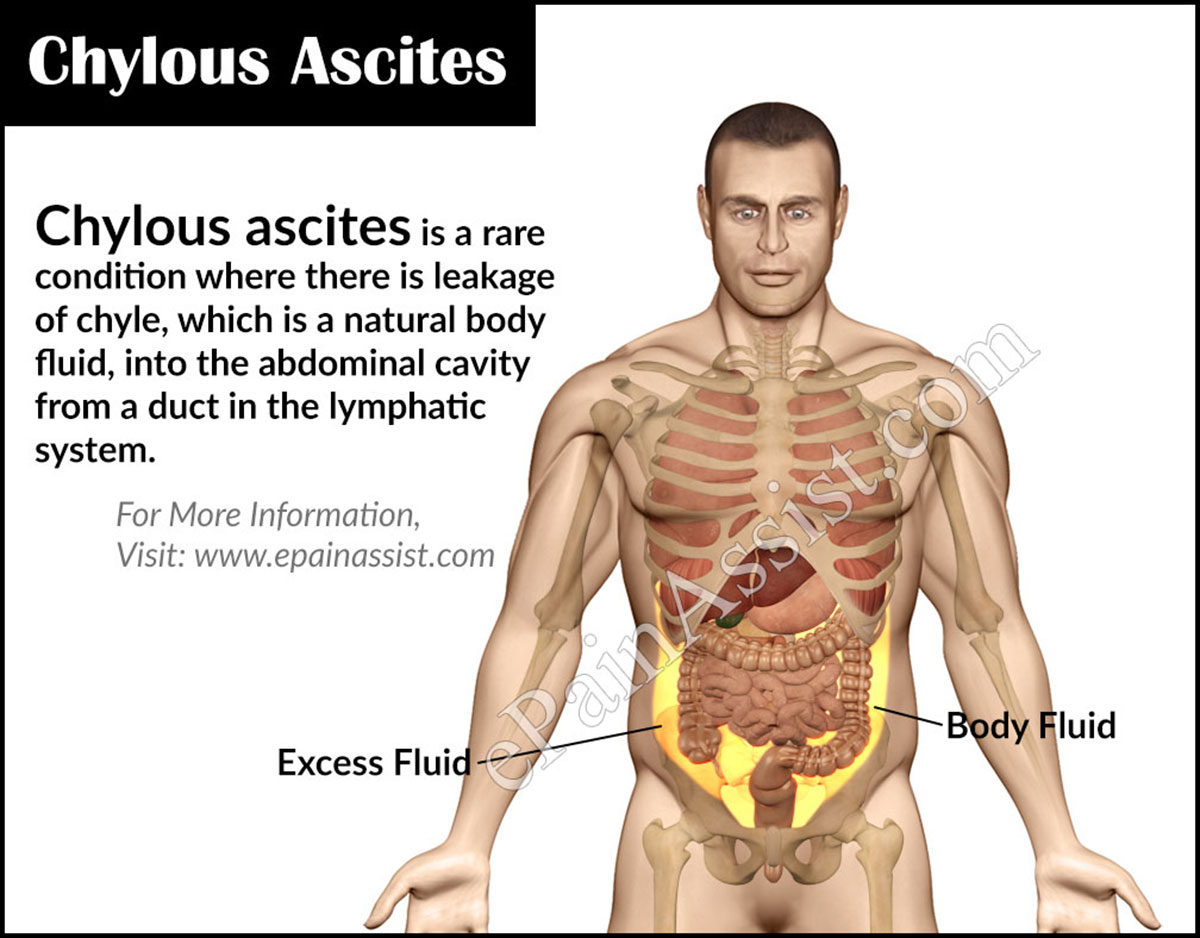What is Chylous Ascites?
Chylous ascites is a rare condition where there is leakage of chyle, which is a natural body fluid, into the abdominal cavity from a duct in the lymphatic system. Chylous ascites is a type of ascites, the cause of which includes different factors, such as blunt trauma to the abdomen, cancer, liver cirrhosis and some surgical procedures.
Chyle is a thick, milky substance, which consists of triglycerides and fatty deposits which are absorbed by the small intestine. This substance traverses through the small lymphatic vessels to where it drains in the main thoracic duct and feeds throughout the body. Any obstruction in the lymph node, thoracic duct or another component of the lymphatic system causes a rupture, which leads to leaking of chyle into the open areas in the abdomen.

Treatment for Chylous Ascites focuses on finding the underlying cause and addressing it on time to prevent serious complications.
Classification of Chylous Ascites
- True Chylous Ascites: In this type, the fluid has high triglyceride content.
- Chyliform Ascites: In this type, there is fatty degeneration of the cells due to which the fluid has lecithin-globulin complex.
- Pseudochylous Ascites: In this type, the fluid has milky appearance, which is due to the presence of pus.
Causes of Chylous Ascites
- Primary or secondary cancers of the lymph nodes are the commonest cause of chylous ascites. Tumors causing obstruction in lymph ducts or any irritation in the lymph ducts slowly leads to rupture and leakage of chyle.
- Malignant neoplasms, such as hepatoma, small bowel angiosarcoma, small bowel lymphoma and retroperitoneal lymphoma.
- Blunt trauma or severe and direct injury to the abdomen can also cause rupture and leakage of the chyle into the abdomen causing chylous ascites.
- Chronic inflammatory conditions, such as cirrhosis and tuberculosis can also lead to complications of the lymphatic system resulting in chylous ascites.
- Certain surgical procedures to the abdomen; sometimes, chylous ascites can occur as an accidental result to a surgery for removing a cancerous lymph node or correcting an abdominal hernia.
- In children, chylous ascites occurs due to congenital defects of the thoracic duct.
- Spontaneous bacterial peritonitis can lead to chylous ascites.
- Pelvic irradiation can also cause chylous ascites.
- Peritoneal dialysis can lead to chylous ascites.
Signs & Symptoms of Chylous Ascites
Symptoms depend on the underlying cause, but the common and initial symptoms experienced by the patient are:
- Patient feels mild distention of the abdomen.
- Patient experiences nausea.
- Patient feels severe stomach ache.
- There is loss of appetite.
- As there is buildup of the chyle, patient experiences fever, weakness and fatigue.
- Additional symptoms of this condition include jaundice, anemia, joint pain and headache.
Investigations to Diagnose Chylous Ascites
- Careful medical history of physical symptoms of the patient is taken.
- This is followed by diagnostic imaging scans of the abdomen such as CT scan or ultrasound of the abdomen.
- For confirming the diagnosis, a thin, hollow needle is inserted into the abdominal cavity to draw a sample of the accumulated fluid, which is then evaluated in the lab to confirm that it is indeed accumulation of chyle or chylous ascites.
Treatment for Chylous Ascites
- First of all, the patient suffering from chylous ascites is started on a low fat diet.
- Diuretics are given to help flush out the extra fluid in the body.
- If the patient suffering from Chylous Ascites is having severe symptoms, then he/she needs to be hospitalized where a shunt is placed in the abdomen which helps in drawing out the excess chyle.
- If tumor is the cause of chylous ascites, then surgery is needed to remove the tumor and stop the leaking of the chyle.
- Usually the patients are able to recover quickly from chylous ascites; however, careful monitoring and treatment as needed should be continued to resolve any underlying chronic medical problems.
Also Read:
